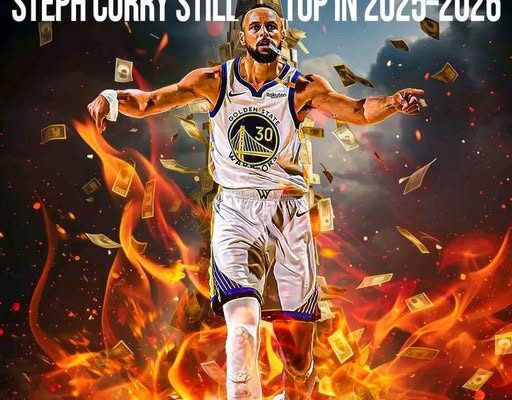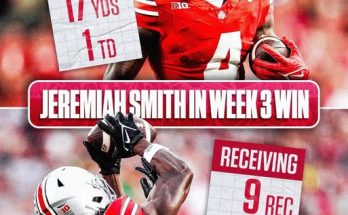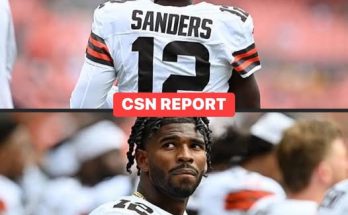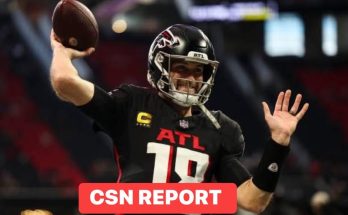Stephen Curry remains the highest-paid player for the 2025–2026 NBA season, commanding an impressive salary of $59.6 million. This staggering figure reflects not only his extraordinary talent and impact on the game but also the evolution of NBA contracts and the increasing financial clout of the league. Curry’s earning power is a testament to his status as one of the most influential and marketable players in basketball history, as well as the strategic decisions by the Golden State Warriors to retain their superstar during an era marked by rising salaries and intense competition for top talent.
Over the years, Stephen Curry has transcended the boundaries of basketball. He is widely credited with revolutionizing the game through his extraordinary shooting ability, especially from beyond the three-point line. His unique style of play has reshaped offensive strategies across the league, inspiring a new generation of players to prioritize long-range shooting. This transformation has made Curry not only a valuable asset on the court but also a massive commercial icon off it, with endorsement deals, media appearances, and branding opportunities that few athletes in any sport can match.
The financial landscape of the NBA has grown dramatically in recent decades. The league’s revenues have skyrocketed, fueled by lucrative television contracts, expanding global fan bases, and increasing digital engagement. As a result, salary caps have risen correspondingly, allowing teams to offer contracts that once seemed unimaginable. Within this context, Curry’s $59.6 million salary for the 2025–2026 season is a reflection of both his individual worth and the broader economic growth of professional basketball.
Golden State Warriors management has carefully navigated the challenge of assembling and maintaining a championship-caliber roster while managing salary cap constraints. Re-signing Curry to a deal that pays him nearly $60 million this season is indicative of their recognition that he remains the franchise cornerstone. His leadership on and off the court, ability to perform under pressure, and capacity to galvanize teammates have been central to the Warriors’ sustained success over the past decade. For the Warriors, investing in Curry is not simply about on-court production; it’s about preserving a brand and identity tied closely to his greatness.
Moreover, Curry’s influence extends beyond his own team. As the highest-paid player, he sets a benchmark for player compensation and contract negotiations league-wide. Other star players and their agents look at deals like Curry’s as reference points when discussing contract values, incentives, and bonuses. This dynamic has contributed to an escalating salary environment that benefits top-tier talent but also challenges teams to balance financial prudence with competitive ambitions.
It’s worth noting that Curry’s contract is the product of both performance and strategic negotiation. Over the years, he has consistently demonstrated elite-level skills, winning multiple MVP awards, leading the Warriors to several NBA championships, and breaking numerous records. His value on the court is matched by his off-court contributions, including his role in charitable endeavors and community engagement, which further enhance his marketability and appeal to sponsors. These factors empower him and his representatives to command a salary commensurate with his stature.
In addition to his base salary, Curry’s overall earnings are bolstered by a variety of endorsement deals with some of the world’s biggest brands. Companies recognize that aligning with Curry brings access to a vast, global audience and a positive association with excellence, perseverance, and innovation. His partnership portfolio includes deals in sportswear, technology, beverages, and more, all contributing to his status as one of the highest-earning athletes worldwide.
The 2025–2026 season will likely see Curry continue to impact the game in profound ways. Even as younger talents emerge and the NBA landscape shifts, Curry’s experience, basketball IQ, and skill set remain elite. His role on the Warriors involves not just scoring points but mentoring younger players and helping to execute complex strategies on the floor. His presence is integral to Golden State’s efforts to contend for another championship, and the organization’s willingness to invest heavily in him reflects their belief that he remains their best chance at sustained success.
The rise of Stephen Curry as the highest-paid player also reflects broader trends in athlete compensation across major sports leagues. The era of multimillion-dollar contracts is well-established, but the scale and frequency of these deals have increased sharply in recent years. Factors such as globalization, increased media exposure, and innovative revenue streams like digital content and gaming partnerships have created new financial opportunities. NBA players like Curry, who combine exceptional talent with widespread appeal, are perfectly positioned to capitalize on these developments.
There is also an element of legacy attached to Curry’s contract and his continued prominence in the league. As one of the defining players of his generation, he is frequently compared with legends of the past and considered a likely Hall of Famer once his career concludes. The magnitude of his contract for the 2025–2026 season underscores the respect and value placed on his contributions to the sport. It’s a financial recognition of his transformative impact and the way he has helped to shape the modern NBA.
Despite the high salary, Curry has often been described as a team-first player. His approach to leadership, willingness to share the spotlight, and commitment to team success over personal accolades have earned him admiration from teammates, coaches, and fans alike. This humility combined with excellence makes his $59.6 million salary not only a reward for past achievements but an investment in a player who continues to elevate those around him.
Financially, the structure of Curry’s contract and its place in the Warriors’ payroll strategy exemplify how modern NBA teams manage star assets. Contracts of this magnitude typically include incentives, bonuses, and clauses that motivate sustained high performance. For the Warriors, it means building a supporting cast around Curry while remaining flexible enough to adapt to unforeseen challenges like injuries or market changes. The salary cap system requires teams to be creative and forward-thinking in managing contracts like Curry’s to remain competitive.
The presence of a highest-paid player like Curry also influences team culture and fan engagement. Warriors fans worldwide eagerly anticipate his performances, while the team’s marketing and branding efforts leverage his popularity. The connection between a superstar player and a franchise’s identity is profound, and Curry’s role in defining the Warriors’ brand cannot be overstated. His style of play, personality, and success have made him a beloved figure not only in the Bay Area but across the NBA landscape.
Looking at the broader league, Curry’s high salary is part of a competitive ecosystem where franchises vie to attract and retain the best talent. The NBA’s salary cap and luxury tax rules create a complex environment for roster construction, with teams needing to weigh the costs and benefits of signing or retaining high-earning stars. Curry’s contract is a case study in how a player’s exceptional abilities justify a premium and how teams must balance these commitments with the goal of building a well-rounded roster.



